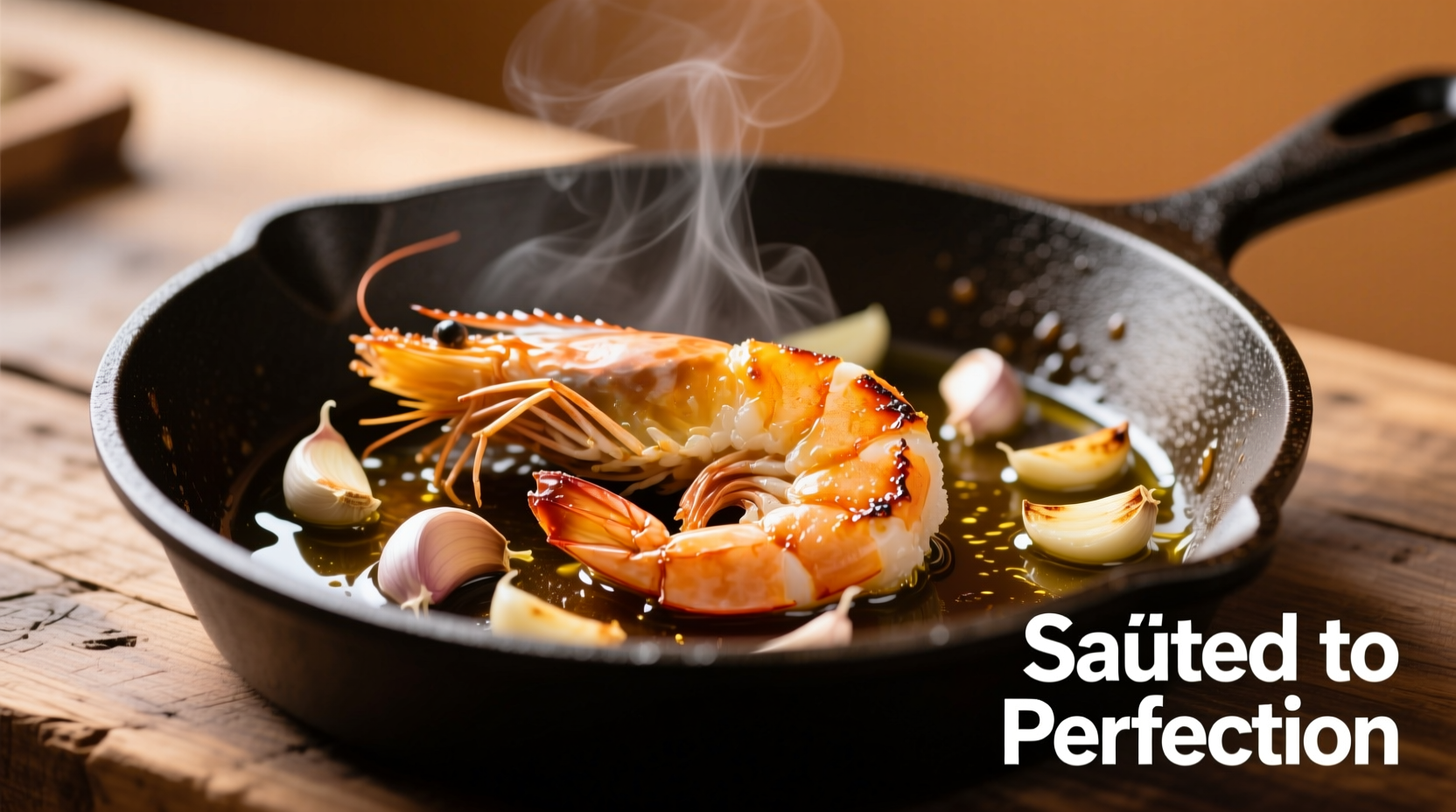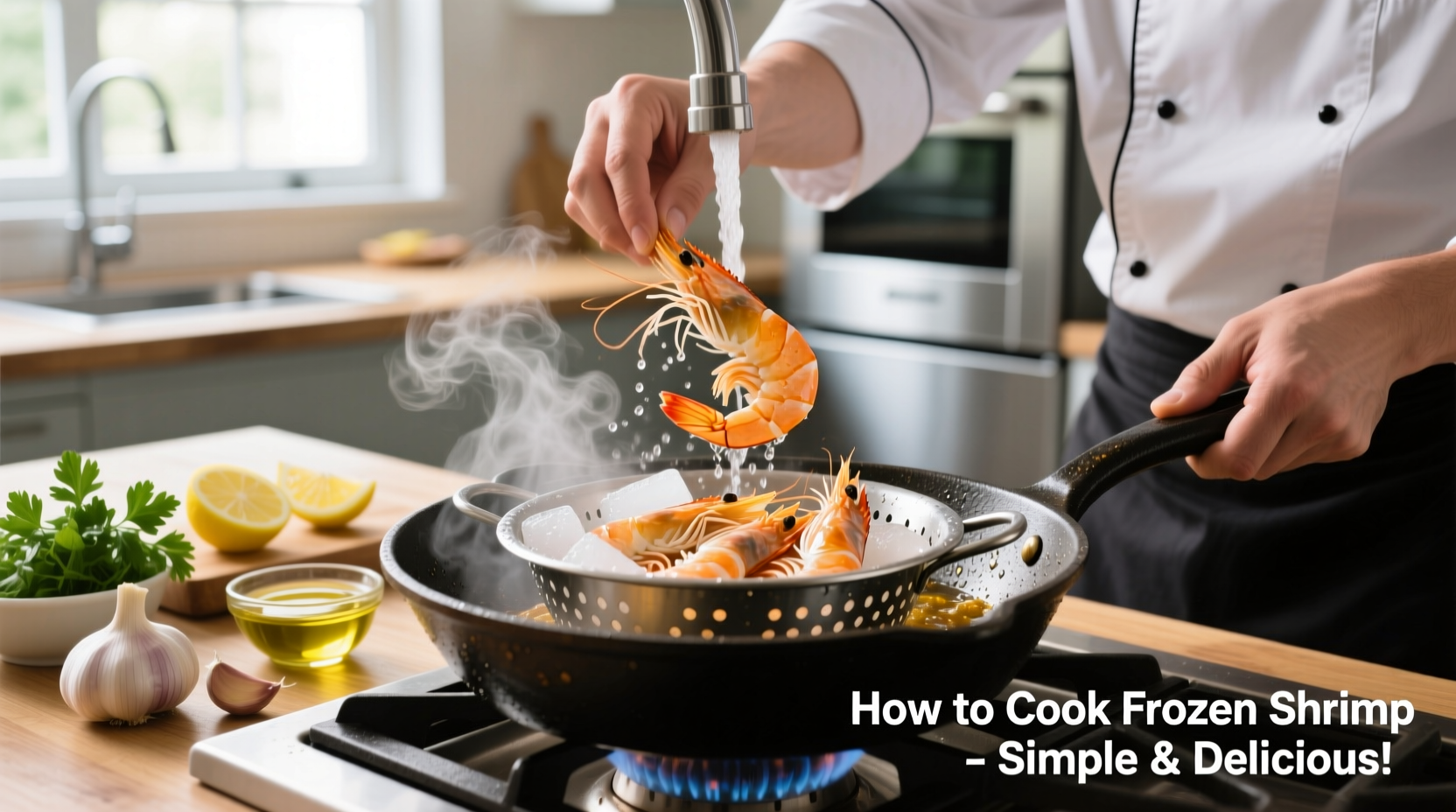Many home cooks mistakenly believe frozen shrimp must thaw before cooking, leading to unnecessary prep time and potential texture issues. Modern freezing techniques preserve shrimp quality, making direct cooking not only possible but often preferable when done correctly.
The Science Behind Cooking Frozen Shrimp
When shrimp freezes, ice crystals form in the muscle fibers. Thawing improperly can cause these crystals to rupture cell walls, resulting in watery, mushy shrimp. Cooking shrimp directly from frozen actually helps maintain structural integrity when using precise temperature control.
| Cooking Method | Time from Frozen | Texture Result | Best For |
|---|---|---|---|
| Pan-searing | 3-4 minutes | Firm, slightly crisp edges | Stir-fries, garlic shrimp |
| Boiling | 2-3 minutes | Tender, uniform texture | Salads, pasta dishes |
| Air frying | 6-8 minutes | Crispy exterior, juicy interior | Appetizers, meal prep |
| Baking | 10-12 minutes | Evenly cooked, moist | Casseroles, baked dishes |
Essential Preparation Checklist
Before cooking frozen shrimp, verify these critical elements:
- Shrimp condition: No freezer burn (white spots indicate dehydration)
- Temperature: Keep shrimp frozen until ready to cook
- Equipment: Preheated pan or water at rolling boil before adding shrimp
- Safety: USDA recommends cooking seafood to 145°F (63°C) internal temperature
Step-by-Step Cooking Methods
Pan-Searing Frozen Shrimp (Most Reliable Method)
- Heat 1 tbsp oil in skillet over medium-high heat until shimmering (about 2 minutes)
- Add frozen shrimp in single layer—do not overcrowd pan
- Cook 1-2 minutes without moving to develop crust
- Flip and cook 1-2 minutes until opaque and curled into "C" shape
- Remove immediately—residual heat will continue cooking
This method works because the intense initial heat creates a protective sear while the interior thaws and cooks gradually. According to the Culinary Institute of America's seafood guidelines, this technique prevents the "rubbery" texture that occurs when frozen shrimp thaw in warm water before cooking.
Boiling Frozen Shrimp
- Bring 4 cups water + 1 tbsp salt to rolling boil
- Add frozen shrimp directly to boiling water
- Cook 2-3 minutes until shrimp float and turn opaque
- Immediately transfer to ice bath to stop cooking
Avoid These Common Mistakes
Food safety researchers at the National Oceanic and Atmospheric Administration (NOAA) have documented these frequent errors when cooking frozen shrimp:
- Thawing in warm water—causes uneven texture and potential bacterial growth
- Overcrowding the pan—lowers temperature, causing steaming instead of searing
- Cooking too long—shrimp becomes tough within seconds past perfect doneness
- Adding seasoning too early—salt draws out moisture during cooking

When NOT to Cook Shrimp Directly From Frozen
While most cooking methods work well with frozen shrimp, certain situations require thawing first:
- Stuffed shrimp preparations needing precise filling insertion
- Delicate recipes requiring exact shrimp positioning (like sushi)
- When using very large shrimp (U/10 count) that may cook unevenly
Serving Suggestions for Perfect Results
Professional chefs recommend these finishing touches:
- Add lemon juice and fresh herbs in the last 30 seconds of cooking
- Toss with high-quality olive oil after cooking to enhance sheen
- Serve immediately—shrimp quality degrades quickly after cooking
- Pair with acidic sides like citrus salads to balance richness
Storage and Leftover Tips
Cooked shrimp maintains quality for 3-4 days refrigerated. For best results:
- Store in airtight container with paper towel to absorb moisture
- Reheat gently in skillet with splash of water (avoid microwave)
- Never refreeze previously frozen-cooked shrimp











 浙公网安备
33010002000092号
浙公网安备
33010002000092号 浙B2-20120091-4
浙B2-20120091-4